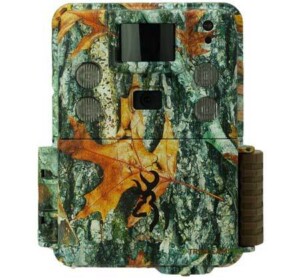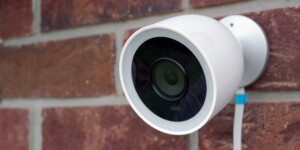A well-placed wildlife camera in your backyard can reveal the exciting candid wildlife moments around your home that you may never see with your own two eyes. Many mammals are active at night and I love drifting off to sleep knowing that my cameras will show me what I’m missing!
Finding the Right Camera
There are many quality wildlife cameras available on the market these days. Trail cameras have come a long way in recent years. Now you can easily find one that takes excellent photos in both darkness and daylight conditions and is reliable in extreme weather. In order to find the right camera and accessories for you, here are some things to consider:
- What is your camera budget?
- Will you be able to manually retrieve your camera’s videos or do they need to be sent to you over a cell service or WiFi?
- Will you have a power source to plug in a camera or do you need one that is battery operated?
- Do you need to protect your camera from theft with security housing and locks?
We enjoy working with TrailCamPro.com because their online camera reviews thoroughly describe the performance differences between different camera models, they quickly answer camera questions, and are skilled at troubleshooting camera performance issues.

A Browning Strikeforce HD Pro camera. It is battery operated and used throughout our Border Wildlife Study.
We at Sky Island Alliance use Browning Strikeforce HD Pro cameras in the field for the Border Wildlife Study and I have several of these cameras at home. I recommend them because they are easy to use and have high sensitivity—photographing both large mammals and small insects that move through the field of view. These cameras are easy to set up because they have a screen on the front of the camera, so you can open the cover to check the camera’s field of view, change camera settings, change the batteries, and swap out the camera memory card without detaching the camera from its mount. When you’ve worked really hard to get the camera set with the perfect angle, it’s so nice to be able to maintain the camera without having to move it!

A Google Nest camera. It is run off your home electricity and sends alerts over WiFi when it detects motion.
At home, I also have a Google Nest camera that continuously records video 24/7 and sends alerts over my home WiFi when it detects motion in front of the camera. The advantage of a camera like this, is that it functions like an online webcam and I can observe the view from the camera on the Nest phone application at any time. You have to pay monthly to have multiple days of video stored online, so that it is an extra expense to consider with this camera. It plugs into an outside socket, so I don’t have to worry about changing batteries which is nice. However, this camera isn’t the best choice if you want high resolution photographs or video, it records a wide-angle perspective and does not produce a sharp image like a traditional trail camera. It’s designed as a security camera, so it most readily detects larger animals and does not reliably detect smaller animals. That said, it does alert me when Gila monsters, tarantulas, or the bathing badger shows up which is awesome so I can run over to the window to watch the wildlife in my backyard.
These two different camera options are by no means the best or only options, they just demonstrate the range of options available and I enjoy using both at home. Have fun searching for the one that’s right for you and next week I’ll explain how I select my own best backyard wildlife viewing spots to mount my cameras

